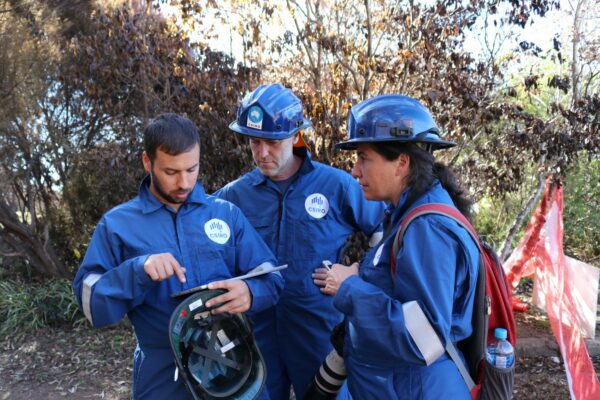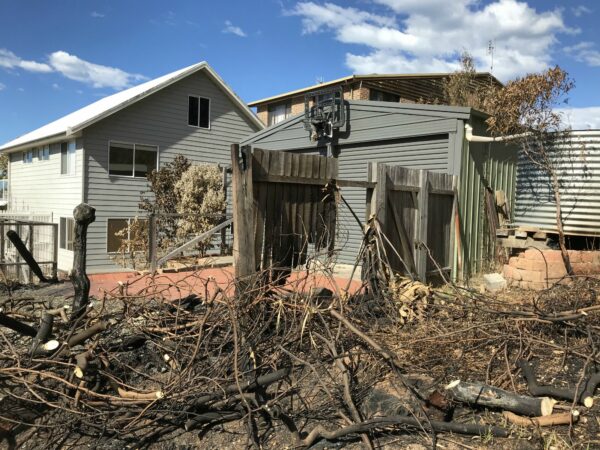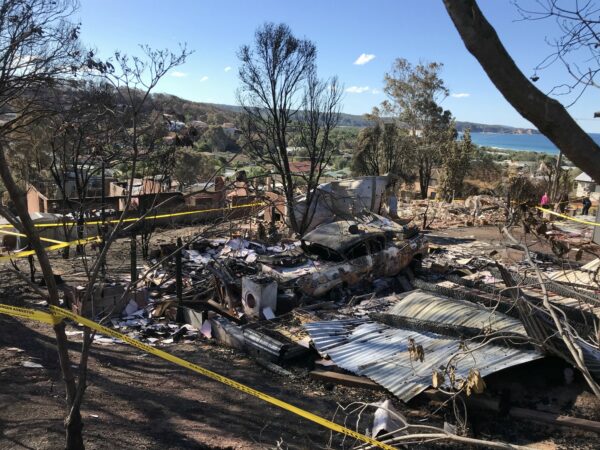Hope rises out of Tathra ashes
After four days surveying the impacts of the Tathra bushfires, CSIRO’s Bushfire Urban Design team returned with some positive news emerging from the ashes.
On Sunday 18 March, 2018, a bushfire and ember storm fanned by raging winds across the coastal escarpment brought devastation to a normally idyllic NSW south coast town. The Tathra fire destroyed 65 houses and 35 caravans or cabins and damaged many others.
“At the request of the NSW Rural Fire Service, CSIRO commenced a detailed study of the Tathra site and the factors that contributed to house loss and survival”, said CSIRO Bushfire Urban Design team leader, Justin Leonard. “Our data and observation combined with the data collected by the RFS survey teams will help piece together what happened at Tathra and why,” said Justin.
“The particularly ferocious ember attack, described by residents and firefighters, contributed to an unusual pattern of house losses, which we are seeking to understand better. In particular we’re trying to understand how the prevailing conditions, unique terrain and various elements in the landscape contributed to this ember attack.”

Above: CSIRO post-bushfire survey team at Tathra (L-R) Alessio Arena, Justin Leonard and Raphaele Blanchi.
As with many Australian bushfires, the destruction seems indiscriminate, with some houses reduced to a pile of ash and twisted rubble, while next door a house appears totally unscathed.
“There are many signs in the landscape, vegetation, building design and gardens that help us understand what happened, why, and, most importantly, how it can be prevented in the future,” said Justin.
“Often the difference between house loss and survival comes down to a few features that repelled or let the fire take hold. For example, shrubs or mulch right up to the house, leaf build-up in gutters or ember-lodging points around timber eaves, timber window frames, decks or fences are common entry points.”

Above: Building design, vegetation, garden materials and fence types can play a key role in resisting bushfires.
CSIRO’s leadership in bushfire research spans more than 60 years. This research includes large-scale laboratory testing of building design and performance under a range of fire exposure conditions. It’s not unusual for CSIRO to carry out these post bushfire surveys.
In fact, CSIRO has provided support for every bushfire involving significant house loss since the 1983 Ash Wednesday fires in South Australia and Victoria. The findings of these surveys have been very useful in supporting the ongoing improvements to bushfire planning and building policy including building codes introduced.

Above: There are signs in the landscape, vegetation, building design and gardens that help us understand what happened and why.
“Amid devastation, the good news from Tathra was the survival of more than 800 houses, including those built since the bushfire building and planning regulations were amended in 2010” said Justin.
“The new house survival is very encouraging because our work is absolutely aimed at improving future outcomes for property, and people across the wide range of rural and urban settings we find in Australia.”
Read more about this in CSIRO ECOS.
